Network stress/Load Testing with Massive Subscriber Simulation for Packet Data/RTP Traffic
Welcome to GL's Newsletter discussing the latest enhancements in MAPS™ Emulator for IP interfaces, including new features for network load testing or network stress testing. The emulator has been enhanced to simulate up to 5,00,000 subscribers, making it easy to stress or load test 3G/4G networks. It also supports high-density mobile data traffic of up to 4 Gbps or 40 Gbps, as well as high-volume CS domain RTP traffic with remote access capability, making it an ideal solution for network stress testing. Whether you need to test network performance under heavy load or simulate real-world network conditions, MAPS™ Emulator is the perfect tool for the job.
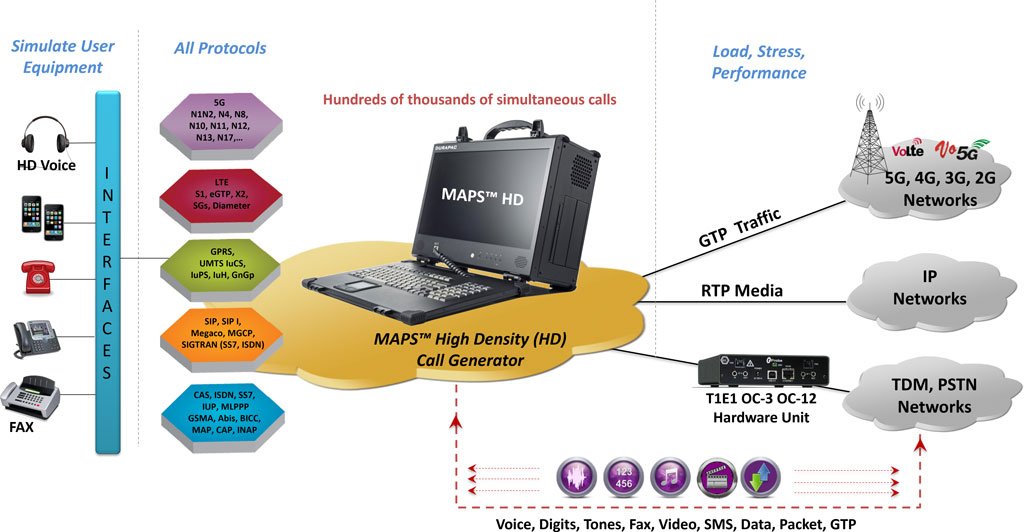
Overview
Testing IP network performance with high volume calls is increasingly important to Wireless Carriers, Internet Service Providers, and Equipment vendors to ensure that quality of experience does not degrade with call intensity, volume, or protocol. Load and stress testing are important to verify stability of IP network and network elements pre- and post-deployment.
With GL’s advanced bulk call generator appliances MAPS™ Server with PacketLoad and RTP HD Server high volume of calls with packet data (HTTP, PCAP) or RTP (Voice/SMS) traffic can be simulated.
These High Density Call Generator Appliances are available as special purpose rackmount network appliance with 4x1GigE NIC capable of high call intensity (hundreds of calls/sec) and high volume of sustained calls (tens of thousands of simultaneous calls/platform). It also supports various methods for massive simulation of subscribers (up to 500000) with high density (up to 4 Gbps or 40 Gbps) mobile data or voice/sms traffic simulation to easily stress or load test 4G/3G/2G networks.
The supporting MAPS™ application also provides useful statistics to verify the simulated mobile data/voice/sms traffic. Users can customize the statistics for the generated stateful TCP/HTTP, and PCAP Replay and other Mobile Data traffic and plot the statistics graphically in Bar/Line/Pie charts form. RTP voice quality metrics (R-Factor, LMOS, C-MOS, Loss, Delay) for the received calls are also calculated and are reported to MAPS™ application.
Latest Enhancements
GL’s MAPS™ Emulator for IP interface is enhanced with few significant features such as CSV files support and Auto-generation method for massive subscriber simulation used in load testing; PacketLoad traffic module is enhanced to support both HTTP and PCAP playback; and Remote access to RTP HD interface for CS traffic simulation. These are discussed briefly below:
Generating Bulk Subscriber Profiles using Database, CSV, and Auto-generated Users methods
In real time scenario, there exists huge number of subscribers with unique UE parameters. MAPS™ supports bulk call generation to stress and load test the network with number of subscriber profiles. Each profile can have unique parameters to simulate different real-time scenarios. However, creating and maintaining massive number of XML based subscriber profiles with unique mobile identifiers such as IMSI, TMSI, MSISDN and traffic parameters is not feasible. Therefore, MAPS™ test tool is enhanced to support CSV subscriber profiles.
CSV database system used within MAPS™ is a simple Excel® file that can dynamically generate up to 20,000 number of subscribers with unique identifiers (IMSI, TMSI, MSISDN) and other key parameters in sequential order.
For massive UE simulation, it is recommended to use CSV option, with which MAPS™ access the UE related information directly from CSV files.

Sample CSV File
MAPS™ also supports dynamic generation of users during bulk call simulation as in real-time scenario. In Auto-generate users’ method, MAPS™ generates ‘N’ number of users while assigning unique IMSI for each generated user in sequential order. While other related user information (TMSI, MSISDN, Identifier) and mobile traffic (Server IP Address, Port, Transmission Type,.) parameters are used from a single profile. With auto user generation option, it is not required to edit or maintain numerous Profiles required for bulk call generation.
MAPS™ is configured with the required number of users (say, 400000000) to be simulated and the Start IMSI value (say, Starting IMSI = 001013012041631). During call simulation, 400000000 users are generated each with unique IMSI sequentially starting from the configured value 001013012041631.

Users Auto Generated during Call Simulation with unique IMSI sequentially
High Density Call Generator Appliances
PacketLoad Server for HTTP and PCAP Traffic Simulation
The MAPS™ Server with PacketLoad can be used for testing various components of mobile infrastructure such as eNodeBs, SGW/SGSN, and PGW/GGSN. It offers all features to perform functional unit tests at every integration point within the wireless infrastructure. The MAPS™ Server with PacketLoad can be used to test all network elements in access & packet core to ensure negotiated QoS is met.
MAPS™ Server with PacketLoad can load/stress test core UMTS/LTE networks by simulating massive number of UEs (up to 500000) with high density (up to 4 Gbps or 40 Gbps) mobile data traffic.
The solution allows to encapsulate the generated packet data within GTP headers and transmit through the gateway points such as SGSN, GGSN, SGW, PGW. It allows simultaneous simulation of multiple sessions per user to verify bearer allocation bandwidth at the end points.

The solution is enhanced to support stateful TCP/HTTP, and PCAP Replay traffic types. It can be configured to test different combinations of TCP/HTTP and UDP traffic combined with PCAP Replay from both ends of the network. This helps to evaluate end to end core network performance with variable packet sizes and fragmentation, and URL list traffic testing.
The parameters are calculated and updated periodically providing real-time mobile data traffic metrics. Typically following statistics are generated from the application. Users can customize the statistics for the generated stateful TCP/HTTP, and PCAP Replay and other Mobile Data traffic.
Link level
- Link state/speed
- ARP
Per Port
- TX/RX Rate/s
- Packets Sent/Received
- Bytes Sent/Received
Packet: Payload Size via MSS (1B to 9400B)
TCP/IP
- SYN, SYN_ACK
- ACK
- FIN
- RST
- HTTP POST / RESPONSE
- TCP/IP Checksum Errors
PCAP Replay - Packets Sent and Received
UDP - Packets Sent and Received
URL
- Connections Established
- FW Addresses Not Blocked
- URL HTTP Wrong Response RX
HD RTP Server Appliance for Traffic Simulation with Remote Access
High volume of CS domain traffic simulation to load test 2G/3G/4G network can be accomplished using GL’s advanced RTP HD Server (PKS109) network appliance. It is available as special purpose rackmount network appliance with 4x1GigE NIC capable of high call intensity (hundreds of calls/sec) and high volume of sustained calls (tens of thousands of simultaneous calls/platform).
In addition to the local HD interface access, now with the latest enhancements, MAPS™ can remotely access GL’s High-Density interface cards during call simulation to pump and receive high volume RTP Traffic via the configured ports. The incoming requests (high density real-time traffic and signaling) are evenly distributed across the HD ports thus handling high volume traffic during load/ stress testing the network.
Using a stack of multiple servers, a larger test system with 100K-200K calls (all controlled from a single Master Controller.) is achievable for enterprise to carrier grade testing.
- R Factor graph will display statistics such as, R-Listening, R-Conversational, R-G107 and R-Nom
- MOS Factor graph will display statistics such as MOS CQ, MOS PQ and MOS Nom. Estimates are based on the ITU G.107 E Model
- User-defined call graph (pie, bar, line) for Voice and SMS calls (LU, MO, MT, Hand-Over)
Speech Quality metrics -
- R-Factor
- Listening Quality MOS scores
- Conversational Quality MOS scores
- PacketLoss
- Discarded Packets
- Out of Sequence Packets
- Duplicate Packets
- Delay and Jitter
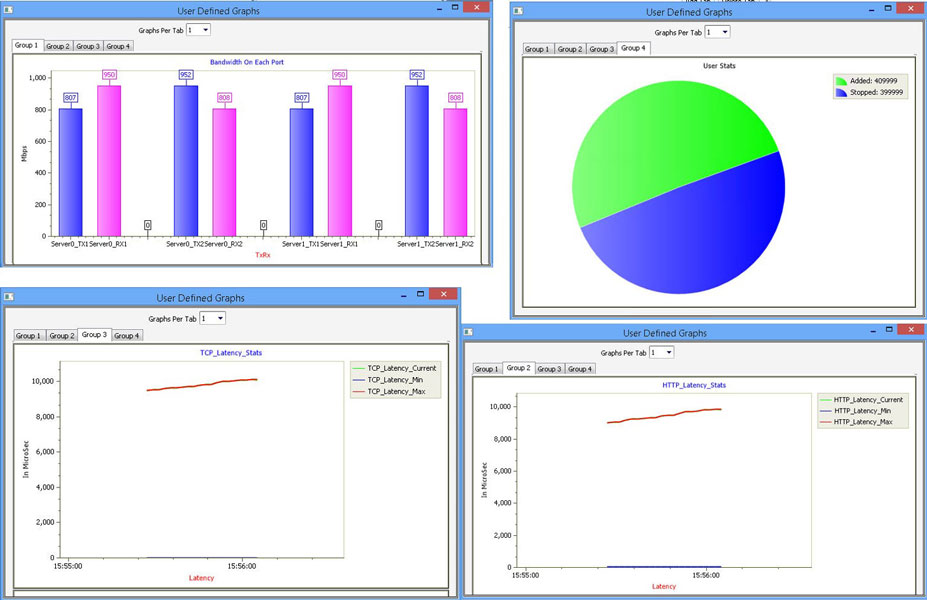
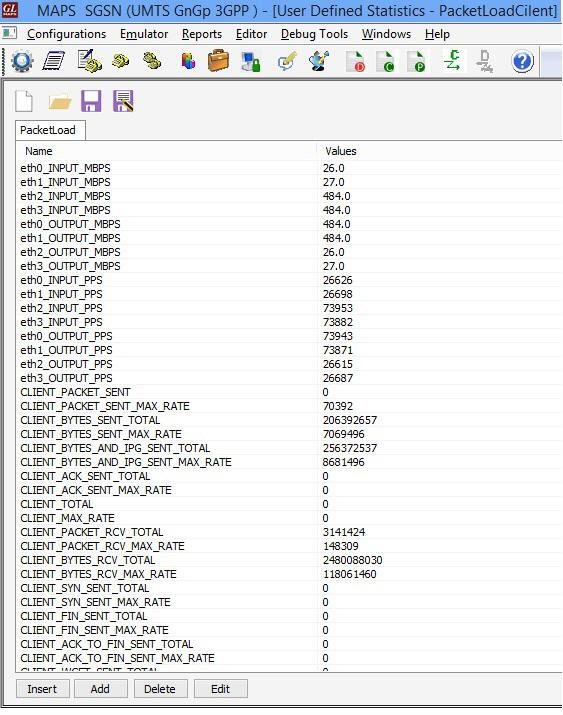
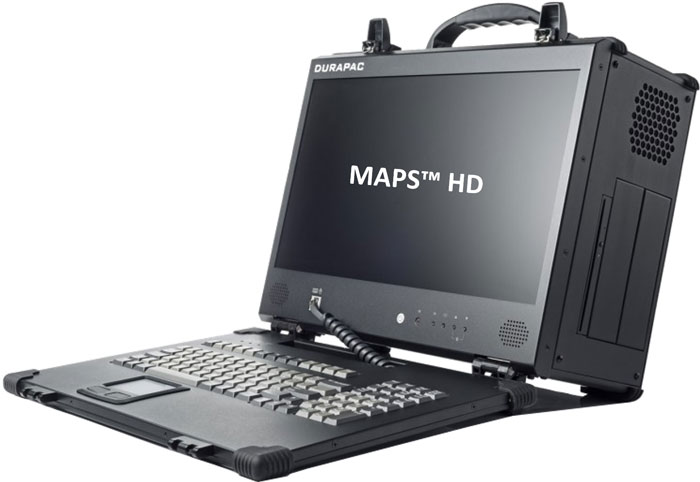
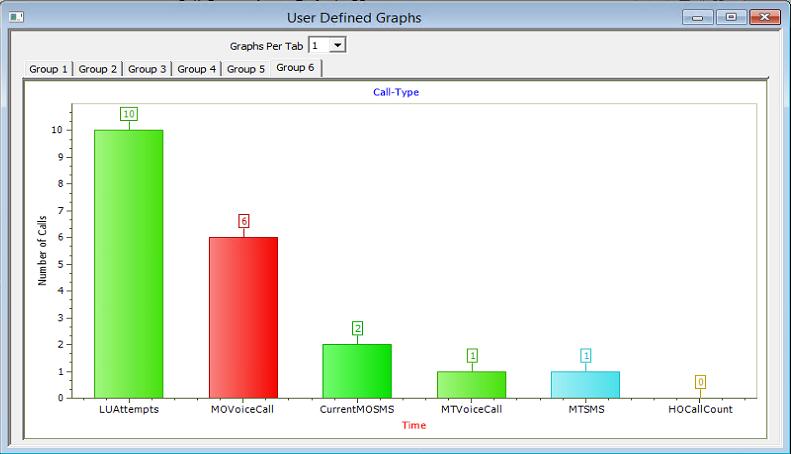
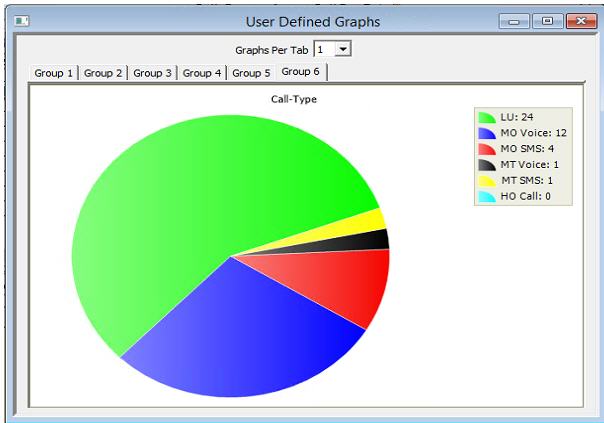

 Back to Newsletter Index Page
Back to Newsletter Index Page